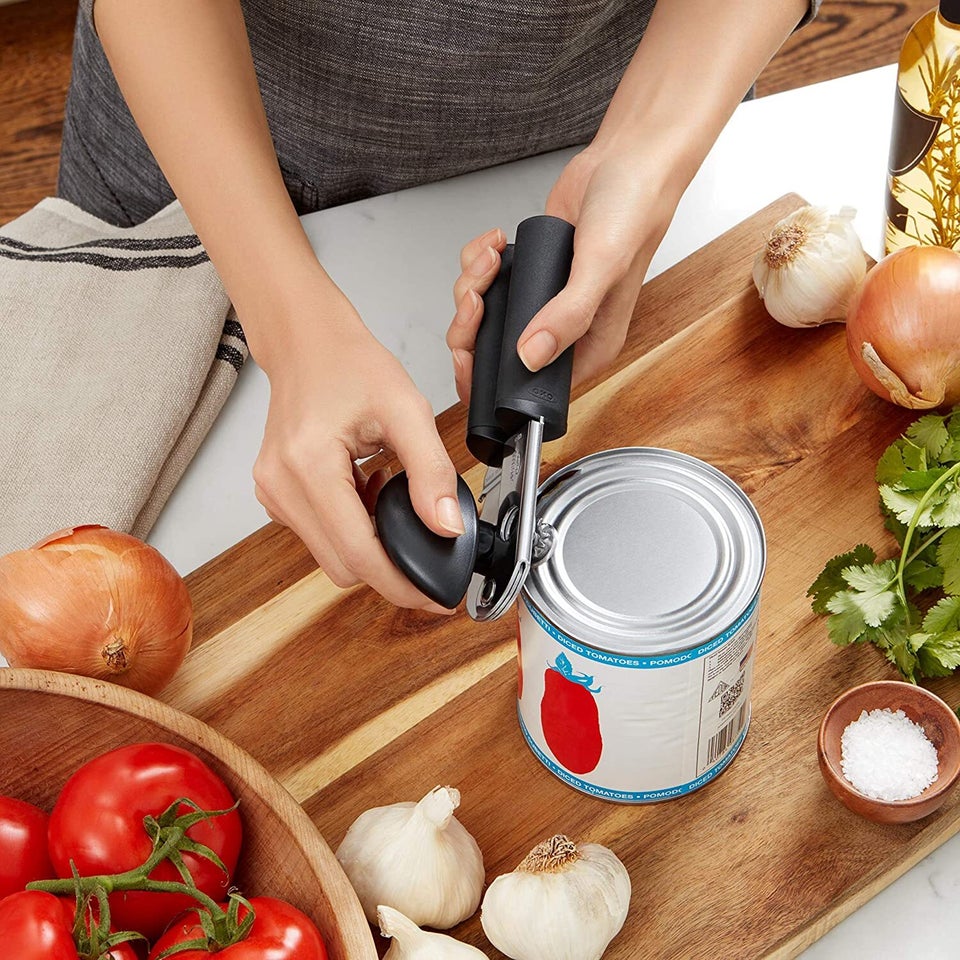
Those vague and lofty New Year’s resolutions — “Eat better” or “Be healthy” — often don’t last past January. Why not keep it simple this year? We talked to nutritionists nationwide for their suggestions on smart, doable resolutions to take nourishing care of yourself in the year ahead.
Resolution #1: Begin with your mind, not your mouth
Registered dietitian Marissa Meshulam told HuffPost she wished people would resolve to “go for enjoyment this year” and abandon all-or-nothing thinking around eating. “It doesn’t matter what you ate yesterday,” she said. “Your body still needs nourishment today. Every time you eat, you have the opportunity to feel your best, and that’s a superpower all its own.”
“I wish more people would resolve to give themselves permission to eat the foods they love,” registered dietitian nutritionist Chelsey Amer told HuffPost. “This year, learn how to make peace with those foods and incorporate them into your diet regularly.”
“Resolve to find joy in the kitchen,” said registered dietitian nutritionist Vicki Shanta Retelny. “Instead of focusing on what to avoid, focus on adding a bounty of whole foods to your eating repertoire this year.”
“Resolve to stop overthinking your eating choices, which robs you of truly being present,” registered dietitian nutritionist Amanda Frankeny told HuffPost. “Reflect on your eating behaviors, challenge your irrational or negative thoughts and move on. It’s quite a process, but taking these steps allows you to let go, learn and look ahead.”
Resolution #2: Eat more plants
Several of the nutritionists made a case for the simple resolution to eat more plants. “They’re extremely nutrient dense, and they contain plenty of antioxidants to keep our cells healthy,” Meshulam said. “I always recommend that at least half of your plate should be plants. And while fresh is great, you can also lean on convenience produce with frozen and dehydrated options, for example.”
Registered dietitian Barbara Ruhs hopes this is the year we can resolve to turn around the recent decline in plant consumption. “Given the power of fresh fruits and vegetables to reduce the risk for disease and death, it’s astounding that we’re actually eating less of them,” she told HuffPost. Ruhs further suggested avoiding packaged goods and heading right for the real thing. “Why look for ‘plant-based’ on a processed food label when you can simply walk to the produce aisle and load up on delicious fresh plants?”
Resolution #3: Start a garden
If you’ve resolved to eat more plants, the easiest way to do that is from your own backyard, patio or windowsill garden, registered dietitian nutritionist Jerlyn Jones told HuffPost. “You don’t have to start with an extravagant space that has enough vegetables to fill a farmers market. Your garden can be as simple as a few window boxes of herbs or a potted tomato plant.”
A good first step, she said, is to figure out what to grow. “When buying seeds or plants, ask what varieties will do best in the conditions you have to work with. For example, several compact tomato plants do particularly well in containers.”

Resolution #4: Consider seafood
“If you’re in search of a perfect protein source, look no farther than seafood,” Ruhs said. “It’s chock full of nutrients like omega-3 fats, selenium and vitamin D. Those nutrients are hard to find elsewhere, but they’re abundant in most seafood and shellfish.”
She eats seafood that’s raised through land-based aquaculture, which she described as involving “no pollution to the environment, no invasive species escaping, no overfishing of fragile wild stocks and zero exposure to toxic metals.”
Resolution #5: Mindful meals
“This year, resolve to monotask at meals,” Meshulam said. “Eating while distracted is one of the biggest eating issues I encounter with clients. When we eat while distracted, our brains don’t actually recognize what is happening, leading to ‘eating amnesia’ that takes us well past the point of fullness. Research shows, for example, that eating while using a smartphone can lead to consuming 25% more calories.”
“To be energized by what you eat, listen to your hunger and fullness, and eat mindfully,” Retelny added.
Resolution #6: Source food with care
Registered dietitian nutritionist Sharon Palmer told HuffPost that she encourages people to get to know how the food you’re eating got on your plate. “Ask yourself questions like, ‘Is the produce from local producers? How did they grow it? Where is the bread baked? How was this morning’s breakfast cereal produced? Where do all the ingredients come from?’ Resolve to support fair, just, socially conscious food producers with your food dollars.”
Resolution #7: Try alcohol-free drinks
Registered dietitian nutritionist Amy Gorin loves the trend of alcohol-free drinks as part of resolution-making. “Drinking less — but still enjoying what you drink — is a great way to cut back on both alcohol intake and calories,” she said. “There are so many options out there that you can try a few different alcohol-free drinks and see what you like.”
